Firma Heathland jest aktywnym recyklerem czystych, poprodukcyjnych tworzyw sztucznych takich jak PC, PMMA, PA, ABS, PS, HDPE, PP, PETG. Heathland jest także recyklerem paneli kompozytowych z aluminium (Dibond, Alubond). Zbieramy czyste, poprodukcyjne tworzywa sztuczne i przekształcamy je w najwyższej jakości surowce wtórne, które mogą być wykorzystane bezpośrednio w produkcji wyrobów z tworzyw sztucznych.
Lokalizacje
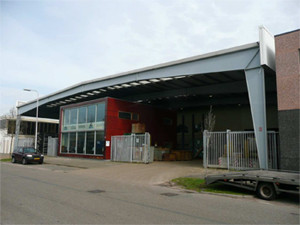 3000 m2 – Holandia
3000 m2 – Holandia
Kolekcja w krajach Beneluksu i Europy Zachodniej
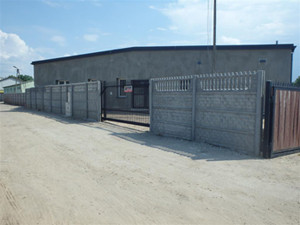
5000 m2 – Polska
Kolekcja w Polsce i Europie Wschodniej
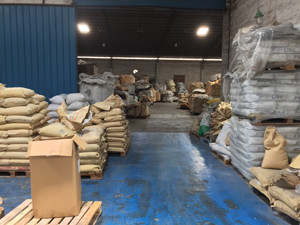 2000 m2 – Hong Kong
2000 m2 – Hong Kong
Przetwórstwo tworzyw plastycznych surowiec
Kolekcja Usługi
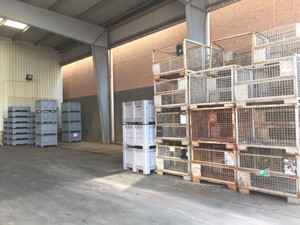
Plastikowe i metalowe opakowania przemysłowe
Oferujemy rozwiązania dostosowane do zbierania, w zależności od konkretnych potrzeb naszych klientów.
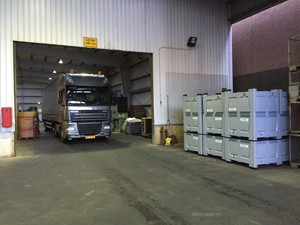
Szybki odbiór
Współpracujemy z różnymi firmami spedycyjnymi, które posiadają szeroki wybór floty samochodowej, aby zapewnić szybki odbiór materiałów.
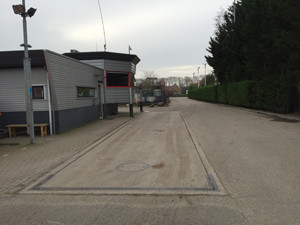
Ważenie i płatność
Po otrzymaniu materiał jest ważony na certyfikowanej wadze przemysłowej. Wypłata następuje na podstawie protokołu przyjęcia towaru lub poprzedzonej faktury od dostawcy.
Proces Recyklingu
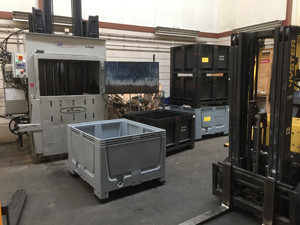
Belowanie
Korzystamy z wysokiej jakości prasy w celu kompresacji objętości przyjmowanych tworzyw.
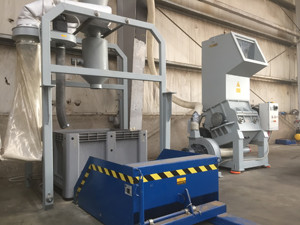
Produkcja przemiałów
W zależności od potrzeb naszych klientów przygotowujemy różnego rodzaju przemiały z tworzyw sztucznych tak do wytłaczania i jak i wtrysku.
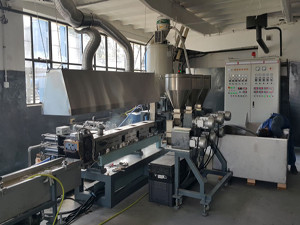
Komponenty
Najwyższej jakości komponenty wg specyfikacji klienta.
Wynik
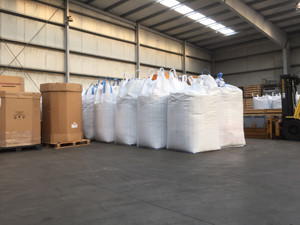
Surowiec wtórny z tworzywa sztucznego
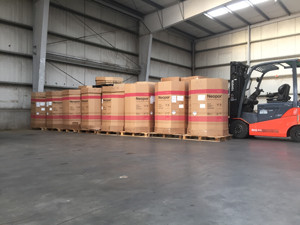
Granulat z przetworzonych tworzyw sztucznych
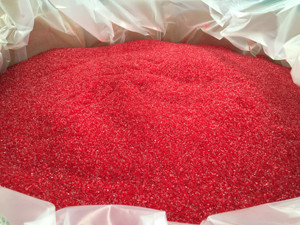
Produkt finalny
Bardziej szczegółowe informacje dotyczące recyklingu tworzyw sztucznych przez firmę Heathland można znaleźć poniżej.
ABS – Acrylonitrile Butadiene Styrene
ABS is extensively used in the manufacture of inexpensive, durable products. The durability of ABS has made it a primary material in the manufacture of products such as, computer housings, televisions and computer monitor housings, automobile components, mobile phones, electronics etc.
As virgin ABS is somewhat expensive, recycling ABS is economically very attractive. Recycled ABS can be blended with virgin material to produce products with lower cost while preserving the high quality.
ABS is recycled by first shredding used plastics to produce shredded plastics. After this step, metals and undesirable plastics are separated from the shredded plastics to produce separated plastics. This separation process is often accomplished by using a water system with different velocity water streams on top of each other. Another way of separating ABS from other types of plastic is through NIR or Near Infrared Technology. After the material composition of the separated plastics has been analyzed, the recovered ABS is granulated into a regrind. For further purification the regrind can be compounded into a pellet by means of an extruder with filter. The end product is an ABS secondary raw material that can be blended with virgin ABS to produce a desirable recycled plastic.
Heathland searches to recycle plastics, including ABS, in ways that are best suitable for people and environment. Recycling happens in-house in one of our own recycling sites in the Netherlands, Poland or China. By recycling ABS plastics in-house at Heathland, the recycling process quality standards are safeguarded and track is kept on where and under which circumstances the plastics are recycled. In case Heathland does not have the suitable machinery and/or technology for a certain recycling process, we make use of services of partner companies worldwide. Heathland works with partners who are qualified, have up-to-date certification, and have set quality standards for the way in which plastic materials are processed. This way, the company can keep sufficient control on the circumstances in which it’s plastics are recycled. If you are interested Heathland’s plastic recycling services, whether your company is a collector, manufacturer, servicer or end-user, please contact us for possibilities.
Dibond – Aluminium Composite Panel
Aluminium Composite Panel (ACP) also know as sandwich panel, Dibond, Vibond, Alubond, Reynobond and other brandnames, is a type of flat panel that consists of two thin aluminium sheets bonded to a PE middle core. ACP’s are frequently used for external cladding of buildings (building facades), for insulation and for signage. Dibond panels can be treated to resist heat and flamability in order to make this type of material a suitable construction material.
Dibond is used commonly for external and internal architectural cladding or partitions, ceilings, signage, machine coverings, container construction etc. Dibond is also widely used within the signage industry as an alternative to heavier, more expensive substrates. It is an excellent material for glossy photography.
Aluminium Composite Panel (ACP) also know as sandwich panel, Dibond, Vibond, Alubond, Reynobond and other brandnames, are used by Heathland for recycling. Heathland separates the aluminium sheets from the PE middle core. Then the aluminium can be re-used in the metal industry, while the PE can be granulated and compounded for usage as a secondary raw PE plastic and blended with virgin PE.
Heathland searches to recycle plastics and composites, including Dibond, in ways that are best suitable for people and environment. Recycling happens in-house in one of our own recycling sites in the Netherlands, Poland or China. By recycling Dibond plastics in-house at Heathland, the recycling process quality standards are safeguarded and track is kept on where and under which circumstances the plastics are recycled. In case Heathland does not have the suitable machinery and/or technology for a certain recycling process, we make use of services of partner companies worldwide. Heathland works with partners who are qualified, have up-to-date certification, and have set quality standards for the way in which plastic materials are processed. This way, the company can keep sufficient control on the circumstances in which it’s plastics are recycled. If you are interested Heathland’s plastic recycling services, whether your company is a collector, manufacturer, servicer or end-user, please contact us for possibilities.
HDPE – High Density Polyethylene
PE is made in 2 main types: HDPE and LDPE. It is a polyolefine. LDPE is usually a soft plastic type. It is tough, though not very strong and has a reasonable impact resistance. Making PE stronger with glass fibre is not usual practice. PE has excellent isolation properties, making it suitable for electrical isolation. Furthermore, PE is resistant against acids, bases, saltsolutions, water, alcohol and oils.
HDPE can be used until 105 degrees celsius and becomes breakable at minus 50 degrees celcius. 45% of all HDPE are casted into various products such as buckets, crates etc. 40% is being blowmoulded into containers or bottles. These bottles are suitable for carrying various liquids except for drink which contain carbon dioxide. The reason for this is that HDPE bottles are permeable for gasses which will cause the carbon dioxide to slip out.
The recycling process of HDPE bottles starts by breaking apart the bales and grinding the bottles into small flakes. Often the bottles have been separated by colour beforehand. This can be done by an automated sorting system using Near Infrared (NIR) technology. The flakes are then washed and floated to remove any heavy (sinkable) contaminants. This cleaned flake is then dried in a stream of hot air and may be boxed and sold in that form. More sophisticated plastic plants may reheat these flakes, add pigment to change the color and run the material through an extruder with filter. This will result in a recycled HPDE pellet, which can be blended with virgin HDPE plastic for a variety of purposed. The extruder forms little beads of plastic that can then be reused in injection molding presses to create new products.
Some common end uses for recycled HDPE are plastic pipes, lumber, flower pots, trash cans, or formed back into non food application bottles and canisters.
Heathland searches to recycle plastics, including HDPE, in ways that are best suitable for people and environment. Recycling happens in-house in one of our own recycling sites in the Netherlands, Poland or China. By recycling HDPE plastics in-house at Heathland, the recycling process quality standards are safeguarded and track is kept on where and under which circumstances the plastics are recycled. In case Heathland does not have the suitable machinery and/or technology for a certain recycling process, we make use of services of partner companies worldwide. Heathland works with partners who are qualified, have up-to-date certification, and have set quality standards for the way in which plastic materials are processed. This way, the company can keep sufficient control on the circumstances in which it’s plastics are recycled. If you are interested Heathland’s plastic recycling services, whether your company is a collector, manufacturer, servicer or end-user, please contact us for possibilities.
LDPE – Low Density Polyethylene
PE is made in 2 main types: HDPE and LDPE. It is a polyolefine. LDPE is usually a soft plastic type. It is tough, though not very strong and has a reasonable impact resistance. Making PE stronger with glass fibre is not usual practice. PE has excellent isolation properties, making it suitable for electrical isolation. Furthermore, PE is resistant against acids, bases, saltsolutions, water, alcohol and oils.
LDPE can be used up to 80-95 degrees celcius and becomes breakable at -50. About 75% of all PE is manufactured to LDPE, which is mainly used for sheets or film (bags, packing material etc.).
Waste LDPE requires special grinders to handle the thin films. Usually the films are shredded, washed and then agglomerated. The agglomerate can then be pelletized by means of an extruder with filter. The newly created LDPE pellets can be used alone, or mixed with virgin material for better properties of the end-product. Manufacturers use recovered LDPE to manufacture a variety of products including irrigation pipe, rubbish bags, black film and sheeting for the agricultural and building industries, and cable cover for the electrical industry.
Recently, new techniques have come available to be able to sort LDPE film better, and to be able to clean dirty films, such as agricultural LDPE film. Though banned in certain countries, as packaging material, LDPE remains to this day one of the most versatile and easily recyclable polymers in the range of thermoplastics.
Heathland searches to recycle plastics, including LDPE, in ways that are best suitable for people and environment. Recycling happens in-house in one of our own recycling sites in the Netherlands, Poland or China. By recycling LDPE plastics in-house at Heathland, the recycling process quality standards are safeguarded and track is kept on where and under which circumstances the plastics are recycled. In case Heathland does not have the suitable machinery and/or technology for a certain recycling process, we make use of services of partner companies worldwide. Heathland works with partners who are qualified, have up-to-date certification, and have set quality standards for the way in which plastic materials are processed. This way, the company can keep sufficient control on the circumstances in which it’s plastics are recycled. If you are interested Heathland’s plastic recycling services, whether your company is a collector, manufacturer, servicer or end-user, please contact us for possibilities.
PA – Polyamide
PA, also known as Nylon, beholds a large group of polymers with various characteristics. The polymer is created through a condensationreaction of an acid-group with an amino-group. To be able to identify the different types of PA, the number of A-atoms of the monomers is put behind the name. Examples are PA 6, PA 6.6, PA 6.10, PA 11 and PA 12.
Uncoloured, PA is looking milkywhite, non-transparent. It can be easily coloured in about every colour. Polyamide has good mechanica characteristics, is though, does not wear ‘n tear easily and is very suitable for machinery parts. PA is restistant to gasoline, oil, fat, alcohol, weak bases and has excellent performance against aging. A big disadvantage of PA is its sensitivity for moisture.
A lot of PA 6 and PA 6.6 is used to produce carpets. As there is a lot of carpetwaste worldwide, a lot can be gained in recycling this material and extracting the PA. Various methods are being tested to see whether carpetrecycling can be a viable business. This is tried out by companies such as DuPont and Polyamid 2000.
The recycling process of polyamide is dependent on the shape and previous use of the original product. Usually items which carry the same colour will be kept together in order to make them more suitable for the end-product. White and light colored material is most widely applicable as it can be colored into any other colour. The scrap PA material is first shredded into little pieces, after which it is washed in a washing tank. After this the cleaned materials are granulated into a fine plastic regrind and then passed through an extrusion and pelletizing process that produces PA pellets. These pellets can be directly used as raw material to produce new PA products. Often the recycled pellets are blended with virgin material for better material properties.
Heathland searches to recycle plastics, including PA, in ways that are best suitable for people and environment. Recycling happens in-house in one of our own recycling sites in the Netherlands, Poland or China. By recycling PA plastics in-house at Heathland, the recycling process quality standards are safeguarded and track is kept on where and under which circumstances the plastics are recycled. In case Heathland does not have the suitable machinery and/or technology for a certain recycling process, we make use of services of partner companies worldwide. Heathland works with partners who are qualified, have up-to-date certification, and have set quality standards for the way in which plastic materials are processed. This way, the company can keep sufficient control on the circumstances in which it’s plastics are recycled. If you are interested Heathland’s plastic recycling services, whether your company is a collector, manufacturer, servicer or end-user, please contact us for possibilities.
PBT – Polybutylene Terephthalate
Polybutylene terephthalate is a semi-crystalline polyester used for door and window hardware, automobile luggage racks and body panels, headlight reflectors, and fiber optic cables. It is being used to replace PVC for cable sheathing, due to a combination of environmental pressures and outstanding electrical properties across a wide range of temperatures. PBT is also replacing metals (in conjunction with PC as an alloy/blend) for automotive body panels and automotive head- and rearlight back-covers.
Based on the ethelene glycol (EG) depolymerization/methanol-ester exchange method first introduced approximately 30 years ago, and applying technology for the manufacture and refining of dimethyl terephthalate (DMT) employed over many years, a new process has been developed to effectively and economically remove foreign matter, and recover high-purity DMT equal to that obtained from petroleum, even when the processed material contains finishing agents and additives such as other polymers and dyes. Used PBT is crushed and washed, and depolymerized with EG. The EG depolymerization process depolymerizes the crushed product to a monomer (BHET – bishydroxyethyl terephthalate) in the presence of a small amount of catalyst. The unrefined BHET is separated, and transformed into unrefined DMT with an ester exchange reaction using methanol. The unrefined DMT is refined using recrystallization and distillation to produce DMT having a purity of 99.99% of that of DMT obtained from petroleum.
Heathland searches to recycle plastics, including PBT, in ways that are best suitable for people and environment. Recycling happens in-house in one of our own recycling sites in the Netherlands, Poland or China. By recycling PBT plastics in-house at Heathland, the recycling process quality standards are safeguarded and track is kept on where and under which circumstances the plastics are recycled. In case Heathland does not have the suitable machinery and/or technology for a certain recycling process, we make use of services of partner companies worldwide. Heathland works with partners who are qualified, have up-to-date certification, and have set quality standards for the way in which plastic materials are processed. This way, the company can keep sufficient control on the circumstances in which it’s plastics are recycled. If you are interested Heathland’s plastic recycling services, whether your company is a collector, manufacturer, servicer or end-user, please contact us for possibilities.
PC – Polycarbonate
The discovery of Polycarbonate dates back to 1898 when Einhorn, a German chemist, observed the formation of an insoluble, infusible solid, while endeavouring to prepare cyclic carbonates by reacting hydroquinone with phosgene. In 1902, Bischoff and Hedenström obtained similar cross-linked, high-molecular-weight Polycarbonate; Dr WH Carothers extended work on the product. It was not, however, until 1953 that Bayer laboratories produced linear thermoplastic Polycarbonate of high molecular weight. In 1957 Bayer and General Electric announced independent development of PC and in the summer of 1960 both companies began commercial production.
Polycarbonates are strong, stiff, hard, tough, transparent engineering thermoplastics that can maintain rigidity up to 140oC and toughness down to -20°C or special grades even lower. The material is amorphous (thereby displaying excellent mechanical properties and high dimensional stability), is thermally resistant up to 135oC and rated as slow burning. Special flame retardant grades exist which pass several severe flammability tests.
Constraints to the use of PC include limited chemical and scratch resistance and it’s tendency to yellow upon long term exposure to UV light. However these constraints can be readily overcome by adding the right additives to the compound or processing through a co-extrusion process.
Polycarbonate is available in a number of different grades dependent on the application and chosen processing method. The material is available in a variety of grades such as film, flame retardant, reinforced and stress crack resistant, branched (for applications requiring high melt strength) and other speciality grades. Also blends of PC are available with e.g. ABS or Polyesters, widely used in automotive industry.
Polycarbonate remains one of the fastest growing engineering plastics as new applications are defined; global demand for PC exceeds 1.5 million tons.
There are various methods to recycle PC. Generally, in the polycarbonate recycling, the following stages can be defined: shredding, washing, granulating, pelletizing. One method of recycling polycarbonate waste resin, comprises: subjecting a polycarbonate waste component to one or both of a transesterification reaction and a polycondensation reaction, wherein the polycarbonate waste component has an OH group concentration and comprises polycarbonate resin waste; and adjusting the OH group concentration of the polycarbonate waste component. Another method of recycling polycarbonate resin waste, comprises: introducing a dihydroxy compound and a carbonate diester to a mixing tank to form a mixing tank composition; directing the mixing tank composition to a prepolymerization tank to form a prepolymerization composition; melting a polycarbonate waste component, wherein the polycarbonate waste component has an OH group concentration and comprises polycarbonate resin waste; combining the prepolymerization composition with the melted polycarbonate waste component to form a combination; adjusting the OH group concentration of the polycarbonate waste component; polymerizing the combination to form a polycarbonate product; and extruding the polycarbonate product.
The process of PC recycling is a developed process, but has not finished evolving. As PC is used more and more as a raw material in various industries, it’s recycling process will be perfected through time.
Heathland searches to recycle plastics, including PC, in ways that are best suitable for people and environment. Recycling happens in-house in one of our own recycling sites in the Netherlands, Poland or China. By recycling PC plastics in-house at Heathland, the recycling process quality standards are safeguarded and track is kept on where and under which circumstances the plastics are recycled. In case Heathland does not have the suitable machinery and/or technology for a certain recycling process, we make use of services of partner companies worldwide. Heathland works with partners who are qualified, have up-to-date certification, and have set quality standards for the way in which plastic materials are processed. This way, the company can keep sufficient control on the circumstances in which it’s plastics are recycled. If you are interested Heathland’s plastic recycling services, whether your company is a collector, manufacturer, servicer or end-user, please contact us for possibilities.
PET – Polyethylene Terephthalate
PET plastic is very much known for it’s use in the drinks-packaging industry. In the 70’s there was a big demand for a light and unbreakable material to carry liquids. PET was the answer. PET plastic is strong, does not wear 'n tear easily, does not shrink and is thus a suitable replacement for silk, cotton, woul and linnen. Furthermore the material can be used as an electrical isolator, fire retardant, chemical fibre, clothing fibre and for certain car parts.
It is important to note that there are different types of PET. For example APET, PETG, PETGAG. APET and PETGAG are generally used as packaging film or blister packaging. PETG is commonly used in sheets for signage.
PET recycling is the process of collecting, sorting and processing in order to reuse the material from which the bottles are made. PET plastic from waste packaging is very suitable to recycle into new fibres. These fibres can be used for various types of cloth. Usually the material is baled after collection, after which it is transported to the place of sorting and processing. The advantage of baling is that the material can comprise heavy loadings, saving transportation cost.
At the place of sorting, the bottles are sorted on type and colour. This is important as the PET colour will influence the fibre colour in the recycling process. After this the bottles are shredded into small flakes. These flakes are washed using hot or cold wash. Hot wash will give the best result, especially when repeated a couple of times.
The flakes can then be made into a fibre which can be used for various purposes. The fibre is usually created by melt spinning. Melt spinning is the least complex spinning method, and simply involves forcing a polymer melt through a spinneret and into air to cause the polymer to solidify. The melt can solidify anywhere from a few centimeters from the spinneret plate to as far away as several meters.
Polyester fibers are used in everything from textiles to automobiles. Examples of the use of the produced fibres are cloth for clothing and stuffing for toys. Polyester fiber production accounts for over half of all synthetic fiber manufacturing; fiber and fabric manufacturing have been refined so that the resulting fabrics have better drape, hand, and feel. Fabrics with luster and hand ranging from cotton to fur have been produced by using non-round spinneret holes, various additives, and/or a variety of post fiber spinning treatments.
Recycling of PET can be made more easy and efficient, by taking the into account the recycling process when doing the bottle design and creating the bottles production-process.
Heathland searches to recycle plastics, including PET, in ways that are best suitable for people and environment. Recycling happens in-house in one of our own recycling sites in the Netherlands, Poland or China. By recycling PET plastics in-house at Heathland, the recycling process quality standards are safeguarded and track is kept on where and under which circumstances the plastics are recycled. In case Heathland does not have the suitable machinery and/or technology for a certain recycling process, we make use of services of partner companies worldwide. Heathland works with partners who are qualified, have up-to-date certification, and have set quality standards for the way in which plastic materials are processed. This way, the company can keep sufficient control on the circumstances in which it’s plastics are recycled. If you are interested Heathland’s plastic recycling services, whether your company is a collector, manufacturer, servicer or end-user, please contact us for possibilities.
PMMA – Polymethyl methacrylate
PMMA (commonly known as Acrylic) is by origin a clear, colorless polymer used extensively for optical applications. It is available commercially in both pellet/pearl and sheet form. Outstanding properties include weatherability and scratch resistance. The most serious deficiencies are low impact strength and poor chemical resistance. Common trade names of acrylic include Plexiglas®, Perspex®, and Acrylite®.
When it comes to making windows, PMMA has another advantage over glass. PMMA is more transparent than glass. When glass windows are made too thick, they become difficult to see through. But PMMA windows can be made as much as 13 inches (33 cm) thick, and they’re still perfectly transparent. This makes PMMA a wonderful material for making large aquariums, with windows which must be thick in order to contain the high pressure of millions of gallons of water.
There are several ways to recycle PMMA. Often these recycling processed involve the procedure of pyrolysis. Monomer can often be recovered from PMMA scrap by depolymerisation. For many years, PMMA has been successfully depolymerised by contact with molten lead at about 500° C.; the monomer MMA can be obtained in a purity of more than 98%. Although this process gives MMA of high purity, the use of lead is undesirable, from an environmental viewpoint. Further, small amounts of lead as a contaminant are extremely difficult to remove from the monomer, reducing the range of commercial products for which the recovered monomer is acceptable. Higher purity would be desirable, and in particular substantial freedom from byproducts such as methyl isobutyrate which is nonpolymerisable, smelly and difficult to separate from MMA. Therefore, now new recycling procedures are being tested (and commercially used in practice) to be able to recycle PMMA much better. As PMMA is a plastic type which is being used more and more, much is to be expected from newly invented recycling methods of this plastic material.
Heathland searches to recycle plastics, including PMMA, in ways that are best suitable for people and environment. Recycling happens in-house in one of our own recycling sites in the Netherlands, Poland or China. By recycling PMMA plastics in-house at Heathland, the recycling process quality standards are safeguarded and track is kept on where and under which circumstances the plastics are recycled. In case Heathland does not have the suitable machinery and/or technology for a certain recycling process, we make use of services of partner companies worldwide. Heathland works with partners who are qualified, have up-to-date certification, and have set quality standards for the way in which plastic materials are processed. This way, the company can keep sufficient control on the circumstances in which it’s plastics are recycled. If you are interested Heathland’s plastic recycling services, whether your company is a collector, manufacturer, servicer or end-user, please contact us for possibilities.
PP – Polypropylene
Polypropylene, also known as polypropene, shares a lot of characteristics with hard polyethylene. As a virgin material it is generally more expensive than PE.
PP is one of the lightest plastics around, with a density of 0,91 grams per kubic centimeter. The material is very resistant to temperature (resistant up to 110 degrees celcius), is almost unbreakable and has some of the good characeristics of both PS and PE. It is very resistant again fatigue from bending because of which it is very suitable for simple hinges. PP becomes breakable at temperatures below 0 degrees celcius.
PP is used commonly in technical applyances for which it is suitable due to it’s shape stiffness. Though polypropylene shares charasteristics with PE, it is not resistant to gasoline. Due to it’s resistance to hot steam sterilization, PP is also commonly used in medical equipment. PP can be modified by adding 30% glass fibre.
It is important to note that polypropylene is available in two basic types as either homopolymer or copolymer material. Although similar in many respects each PP type exhibits distinct differences in their appearance as well as their performance.
Polypropylene Homopolymer (PPH) is the most commonly used type. PPH has a high strength to weight ratio and is stiffer and stronger than PP copolymer. This characteristic combined with good chemical resistance and weldability allows this material to be used in many corrosion resistant structures.
Polypropylene copolymer (PPC) is slightly softer but has better impact strength, is tougher and more durable than PPH. Copolymer polypropylene tends to have better resistance against stress and cracking and lower temperature toughness than homopolymer at the expense of small reductions in other properties.
Recycling PP is similar to recycling many other plastic types. Typically the waste PP material is collected, sorted, shredded and washed. Then the purified PP is granulated to a regrind. The regrind can be used direct in PP injection machines, or be filtered to a higher purity by means of an extruder. The recycled pellet is then used alone, or in blend with virgin PP to produce polypropylene products. New items that are made from PP include some witches hats (traffic cones), compost bins, worm farms, garden furniture, garden edging, buckets, canisters and other plastic products.
Heathland searches to recycle plastics, including PP, in ways that are best suitable for people and environment. Recycling happens in-house in one of our own recycling sites in the Netherlands, Poland or China. By recycling PP plastics in-house at Heathland, the recycling process quality standards are safeguarded and track is kept on where and under which circumstances the plastics are recycled. In case Heathland does not have the suitable machinery and/or technology for a certain recycling process, we make use of services of partner companies worldwide. Heathland works with partners who are qualified, have up-to-date certification, and have set quality standards for the way in which plastic materials are processed. This way, the company can keep sufficient control on the circumstances in which it’s plastics are recycled. If you are interested Heathland’s plastic recycling services, whether your company is a collector, manufacturer, servicer or end-user, please contact us for possibilities.
PS – Polystyrene
Polystyrene is a plastic material having many uses and is particularly useful, when in a foam form, as a material for making food containers. It is a significant constituent of municipal solid waste and is particularly prevalent in waste from fast food restaurants, cafeterias and similar food service establishments. Such establishments commonly use trays, containers and cups made of polystyrene foam (PSF).
Fast food restaurant and cafeteria waste in addition to containing large amounts of PSF also commonly comprises a large proportion of paper products (such as bags, cups and napkins), wax-coated paper products, condiment containers, plastic eating utensils and food morsels.
Recycled polystyrene foam can be used to manufacture a wide variety of products such as plant pots, plastic desk organizers, foam construction insulation etc. and is therefore, a valuable product. Further, polystyrene foam, like most plastic, takes a very long time to degrade when placed in landfills. Therefore, it is desirable to recycle polystyrene foam to reduce the amount of such plastic in municipal landfills.
Polystyrene can be recycled in different ways. EPS is typically first compacted in a hot or cold temperature compacting machine. Other PS is recycled by first reducing the plastic waste size through shredding. In case the PS plastic is contaminated, it is washed as well. After this step the material can be granulated into a regrind. In case further purification of the PS plastic is necessary, the material can be pelletized by means of an extruder equipped with a filter. This way, pellets can be produced of PS (GPPS), HIPS, EPS etc. These pellets can be used alone or blended with virgin material for better material properties. If PS is mixed with other materials, such as paper, the waste PS will first have to go though an advanced process of separation. This can occur when recycling PS yogurt cups. Currently research is being done to see whether such a process would be economically viable.
Heathland searches to recycle plastics, including PS, in ways that are best suitable for people and environment. Recycling happens in-house in one of our own recycling sites in the Netherlands, Poland or China. By recycling PS plastics in-house at Heathland, the recycling process quality standards are safeguarded and track is kept on where and under which circumstances the plastics are recycled. In case Heathland does not have the suitable machinery and/or technology for a certain recycling process, we make use of services of partner companies worldwide. Heathland works with partners who are qualified, have up-to-date certification, and have set quality standards for the way in which plastic materials are processed. This way, the company can keep sufficient control on the circumstances in which it’s plastics are recycled. If you are interested Heathland’s plastic recycling services, whether your company is a collector, manufacturer, servicer or end-user, please contact us for possibilities.
PVC – Polyvinyl Chloride
Polyvinyl chloride, (IUPAC Polychloroethene) commonly abbreviated PVC, is a widely used thermoplastic polymer. In terms of revenue generated, it is one of the most valuable products of the chemical industry. Around the world, over 50% of PVC manufactured is used in construction. As a building material, PVC is cheap, durable, and easy to assemble. In recent years, PVC has been replacing traditional building materials such as wood, concrete and clay in many areas. Despite claims that PVC production negatively affects the natural environment and human health, it is still widely used. Ofcourse it is questionable whether this is ethical or not.
There are many uses for PVC. As a hard plastic, it is used as vinyl siding, magnetic stripe cards, window profiles, gramophone records (which is the source of the term vinyl records), pipe, plumbing and conduit fixtures. The material is often used in Plastic Pressure Pipe Systems for pipelines in the water and sewer industries because of its inexpensive nature and flexibility. PVC pipe plumbing is typically white, as opposed to ABS, which is commonly available in gray as well as white.
It can be made softer and more flexible by the addition of plasticizers, the most widely-used being phthalates. In this form, it is used in clothing and upholstery, and to make flexible hoses and tubing, flooring, to roofing membranes, and electrical cable insulation.
Polyvinyl chloride is produced by polymerization of the monomer vinyl chloride, as shown. Since about 57% of its mass is chlorine, creating a given mass of PVC requires less petroleum than many other polymers.
PVC- or Vinyl Recycling has historically been difficult to perfect on the industrial scale. But within the last decade several viable methods for recycling or upcycling PVC plastic have been developed. One of the several new methods of PVC recycling is Vinyloop®.
The technical process of Vinyloop can be described fairly simply; it includes only 6 main steps. To begin the cycle, composite waste is collected and brought to the plant. Much of the material is preprocessed but some of this step takes place in the factory. Some operations that may be performed are, “a cleaning step (washing, etc.) reducing the size for fast dissolution (by cutting, grinding, milling, etc.) and a homogenization step.”
After pre-treatment, the material is sent to a dissolution chamber where the solvent, methyl ethyl ketone, dissolves the PVC and its additives. While these factors are dissolved or suspended, the insoluble materials of the original composite remain out of solution and can thus be removed in subsequent steps.
The separation of the insoluble materials occurs in the next tank. There are many techniques to filter the solid from the solution such as, “centrifuging, decanting, or cycloning,”, the particular method used is mandated by each individual situation. “After separation, the secondary material is: washed with pure hot solvent to eliminate virtually all of the dissolved PVC compound, stripped with steam to recover all the solvent, then discharged.” In this way all material is removed from the PVC. This is a very important step to yield pure PVC material for reuse.
The next stage in the process is the precipitation of the dissolved PVC. At the onset of this stage, it is possible to integrate more additives into the dissolved PVC to achieve a variety of characteristics. At the Ferrara Plant, a plasticizer is added to the PVC in order to generate a more flexible and less brittle product. Steam is then injected into the solution, evaporating the solvent completely, leaving an aqueous slurry of PVC and additives. The unwanted material from the composite as well as the solvent are thus removed. The evaporated solvent condenses in its original chamber, ready to dissolve another batch of composite material. This closed loop cycle has an effective retention rate of 99.9%, rendering the solvent a technical nutrient in this process.
The final stage in the Vinyloop is the drying phase. The aqueous solution of PVC is dried and the effluent water filtered to remove impurities. The dry R-PVC forms pellets (a significant occurrence due to that form’s ease of use in the plastics industry). Dry pellets are easy to package and ship out to be molded into other products. Many times these pellets can comprise 100% of the material for a new product, but when not, any percentage of R-PVC can be added to virgin PVC in product formation.
Heathland searches to recycle plastics, including PVC, in ways that are best suitable for people and environment. Recycling happens in-house in one of our own recycling sites in the Netherlands, Poland or China. By recycling PVC plastics in-house at Heathland, the recycling process quality standards are safeguarded and track is kept on where and under which circumstances the plastics are recycled. In case Heathland does not have the suitable machinery and/or technology for a certain recycling process, we make use of services of partner companies worldwide. Heathland works with partners who are qualified, have up-to-date certification, and have set quality standards for the way in which plastic materials are processed. This way, the company can keep sufficient control on the circumstances in which it’s plastics are recycled. If you are interested Heathland’s plastic recycling services, whether your company is a collector, manufacturer, servicer or end-user, please contact us for possibilities.


